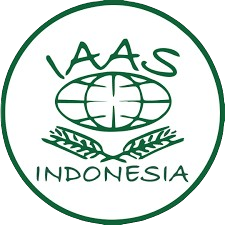Padar Island—A Portrait of Commercialization over Conservation, Are We Selling Paradise Now?

In 2025, a controversial plan emerged to build hundreds of luxury villas on Padar Island, part of Komodo National Park. The plan threatens the island’s delicate ecosystem, where only around 30 Komodo dragons remain. Padar Island, recognized as a UNESCO World Heritage Site since 1991, is more than just land; it represents a critical habitat for endangered species and a cultural treasure for local communities.
Large-scale tourism projects endanger the fragile environment. The northern beach of Padar, home to turtles and various fish species, is at risk of destruction. The influx of humans, construction, and infrastructure could disrupt wildlife patterns, generate pollution, and reduce the quality of natural habitats (Hariandja, 2025). When nature is commercialized, the loss extends beyond land, but it is LIFE ITSELF that suffers.
Local communities have already experienced displacement. Residents of Loh Liang were relocated to Komodo Village decades ago, and now more than 50 small vendors on Padar face losing their livelihoods due to tourism concessions granted to companies (Tim Floresa, 2025). Instead of integrating local populations into conservation efforts, land rights are increasingly handed to investors, leaving communities marginalized.
A striking imbalance exists in land allocation. PT KWE received a concession of 274.13 hectares (which 19.5% of Padar Island) to run tourism facilities, while local residents were granted only 26 hectares for approximately 2,000 people (Wahyuni, 2025). This disparity highlights an emerging form of land monopoly and agrarian injustice, risking further marginalization if not addressed by authorities.

Hans Bataona, Kupangnews.com | Hundreds of FMPD members urge the government to halt investment on Padar Island
The local indigenous people, known as Ata Modo, have voiced consistent opposition since 2014. They stress that conservation efforts should not be sacrificed for commercial gains. “We have already sacrificed for conservation; do not let us be sacrificed again,” stated members of the Ata Modo community (Tim Floresa, 2025). UNESCO has also emphasized that tourism development in Komodo National Park must follow sustainable practices to ensure long-term environmental and cultural preservation.
Padar Island’s predicament is a vivid example of the tension between commercial development and environmental conservation. If unchecked, the island’s unique biodiversity, cultural heritage, and local livelihoods could be irreversibly compromised. As Indonesia continues to navigate economic growth and environmental stewardship, Padar stands as a reminder of the delicate balance between profit and preservation (IAN).
Author: Muhammad Alfiansyah
REFERENCES
- Hariandja, R. (2025, August 18). Vila Pulau Padar Risiko Ganggu Komodo, Resahkan Masyarakat. Mongabay. https://mongabay.co.id/2025/08/18/vila-pulau-padar-risiko-ganggu-komodo-resahkan-masyarakat/
- Tim Floresa. (2025, August 17). Tolak Konsesi Bisnis PT KWE, Pemuda di Pulau Komodo: “Pulau Padar Bukan Taman Bermain Investor”. Floresa. https://floresa.co/reportase/mendalam/77798/2025/08/17/tolak-konsesi-bisnis-pt-kwe-pemuda-di-pulau-komodo-pulau-padar-bukan-taman-bermain-investor
- Wahyuni, T. (2025, August 6). Proyek ratusan vila di Pulau Padar – ‘Warga sakit hati karena peminggiran bertahun-tahun’. BBC Indonesia. https://www.bbc.com/indonesia/articles/cz6018d31q8o
